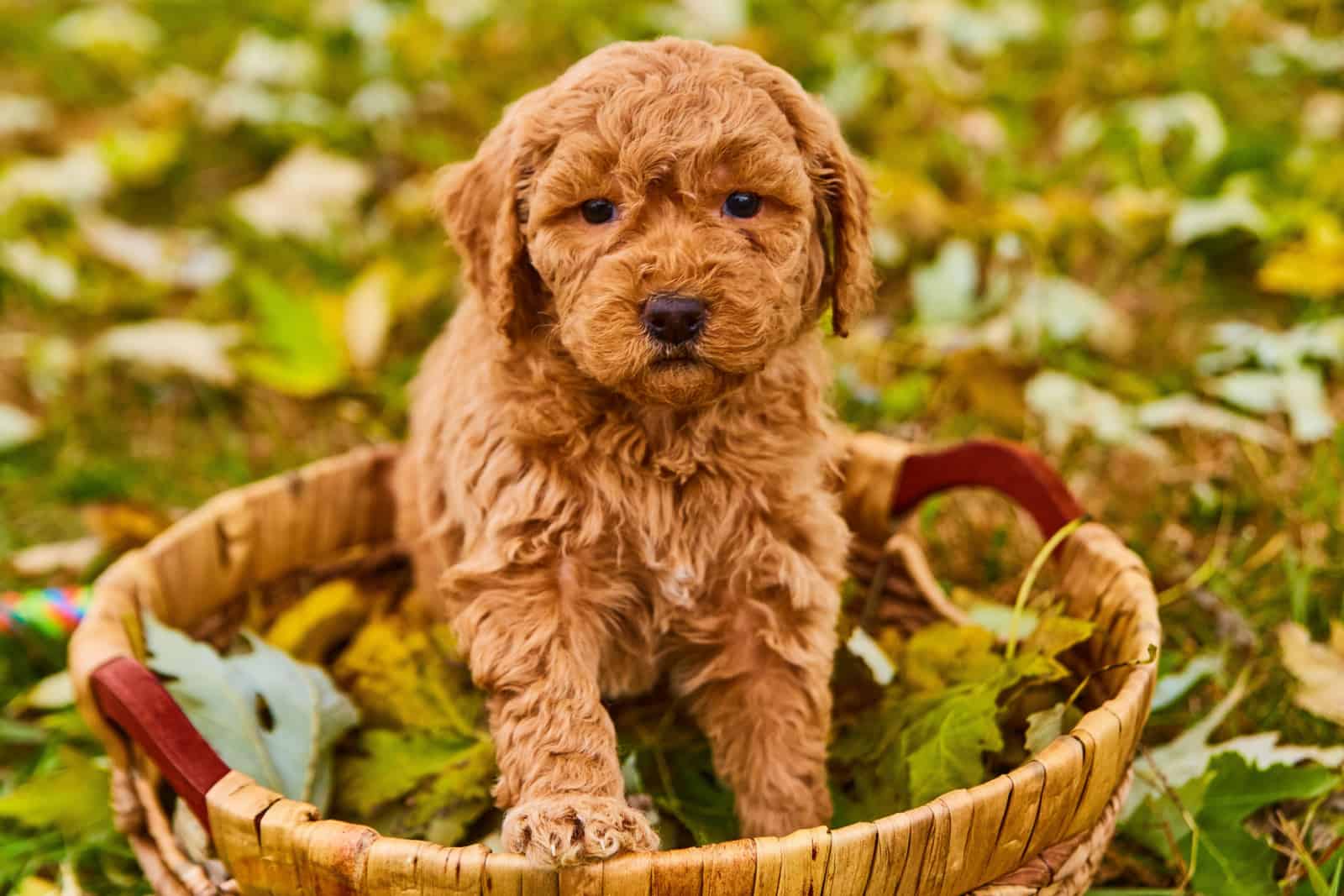The Goldendoodle puppy coat transition is one of the processes that is unavoidable. It is an important part of their physical development, along with changes in weight and height.
Goldendoodles usually don’t shed as much as other long-haired pups, which is why they’re considered a hypoallergenic breed (if they inherit the Poodle genes, of course).
However, these adorable pups will also lose a substantial amount of hair during the coat-changing process.
In this article, you will find everything you need to know about this phase of a Goldendoodle’s life, along with some useful grooming tips that will make the process easier for both you and your pet.
What Is The Goldendoodle Puppy Coat Transition?
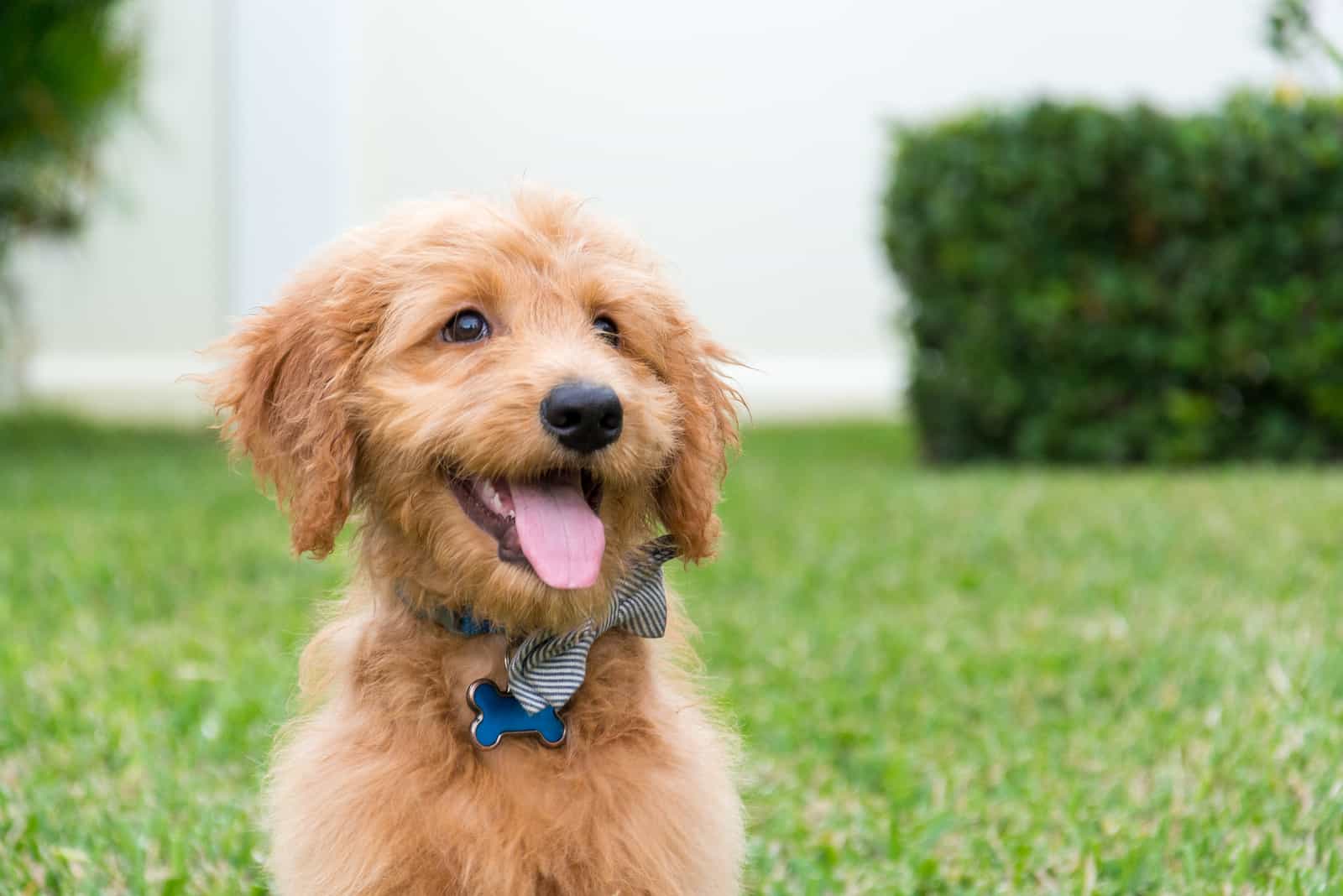
Puppy coat transition is a process that almost every pup experiences during the first year of its life. This transition is a part of the healthy development of puppies into mature canines, which is supposed to end after the Goldendoodle puppy turns one year of age.
It’s not something that happens overnight, so many pet owners don’t even notice this major change that their puppy goes through.
Before we continue discussing the whole process of the Goldendoodle puppy coat transition, it’s important to define what a Goldendoodle puppy is.
This type of designer dog breed is a result of crossbreeding between two popular family dog breeds – Golden Retrievers and Poodles.
The term “designer” was used on purpose to highlight the fact that the Goldendoodle puppy is the result of purposely breeding two different types of canines.
As a mixed breed puppy, the Goldendoodle goes through the same process as all other pups during the first twelve months of their life.
This procedure is known as coat transition, during which the Dood’s fur shifts from the puppy type of fur into a mature type of coat.
The duration of this transition might range somewhere from four months all the way up to eight months. In other cases, the change could take as long as one to two years to complete.
How Do You Prepare For The Coat Transition?
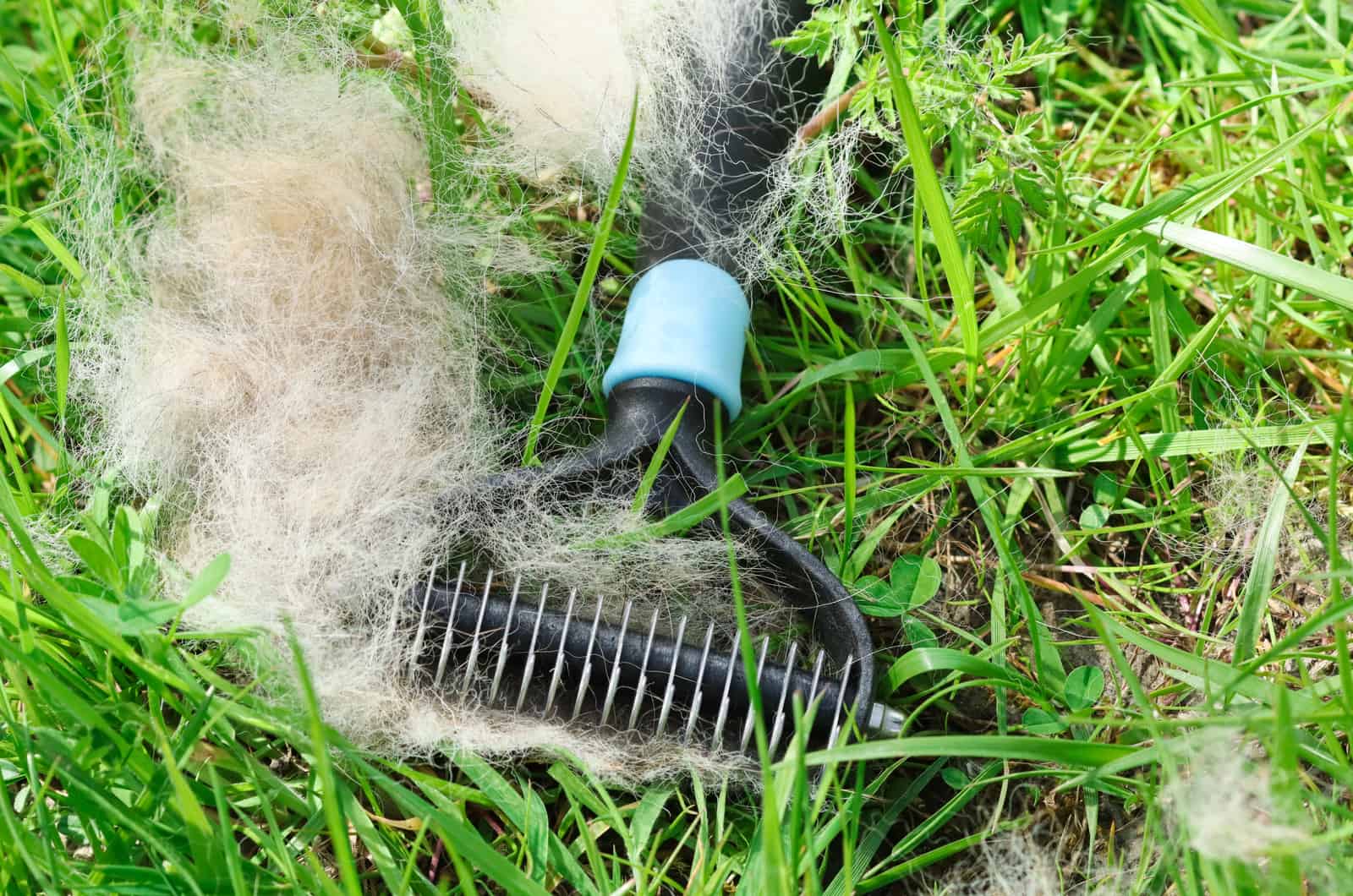
When you decide to adopt a Goldendoodle puppy, one of the last things that comes to your mind is the preparation for coat transition.
Although they’re known as a low-shedding breed, these canines might shed more as they get older, at least until they complete the shift to adult fur.
During this time, the Doodle puppy will require lots of attention and care from its owner.
However, there are quite a few things that you can do in order to prepare yourself in time for this process. Here are some of the actions you might take and practice as frequently as possible to ensure that the transition goes easily, without any complications.
Brushing And Grooming
Regular grooming is an essential part of care for this type of puppy, especially during the first year of its life. By brushing your pet’s fur on a regular basis, you will significantly reduce the excess hair, which would end up all over your house.
It is essential to give the Goldendoodle a thorough brushing frequently as it also prevents tangles and knots from appearing in its fur.
Another benefit of regular brushing is the removal of any dirt and dander that might be trapped in the thick coat of these crossbreed puppies.
One of the best brushes for Goldendoodles is the slicker brush, which has curved pins, so that it won’t scratch their skin during daily brushing sessions.
However, although this type of brush is generally recommended, you can work with whatever you might find best for your pup.
Nowadays, there are plenty of retailers that sell good-quality brushes and combs for all types of canines, so you really can’t go wrong with any brush you find suitable for your pet.
When Should You Trim Your Pup’s Hair?
If you notice that the Goldendoodle’s fur is tangled or full of stubborn knots, then you might consider using dog clippers.
Instead of buying regular clippers, you should look for ones that are specifically made for grooming Goldendoodle puppies.
Investing in a good-quality grooming kit will be money well-spent if you plan to own a Goldendoodle puppy or any Doodle puppy for that matter.
However, I wouldn’t recommend you use scissors often, especially if you just want to trim a few knots or tangles from your pup’s fur.
The main reason for that is the playfulness of puppies. It’s really difficult to manage scissors while the pup is in constant movement, which is why dog clippers are a much better option.
Bathing
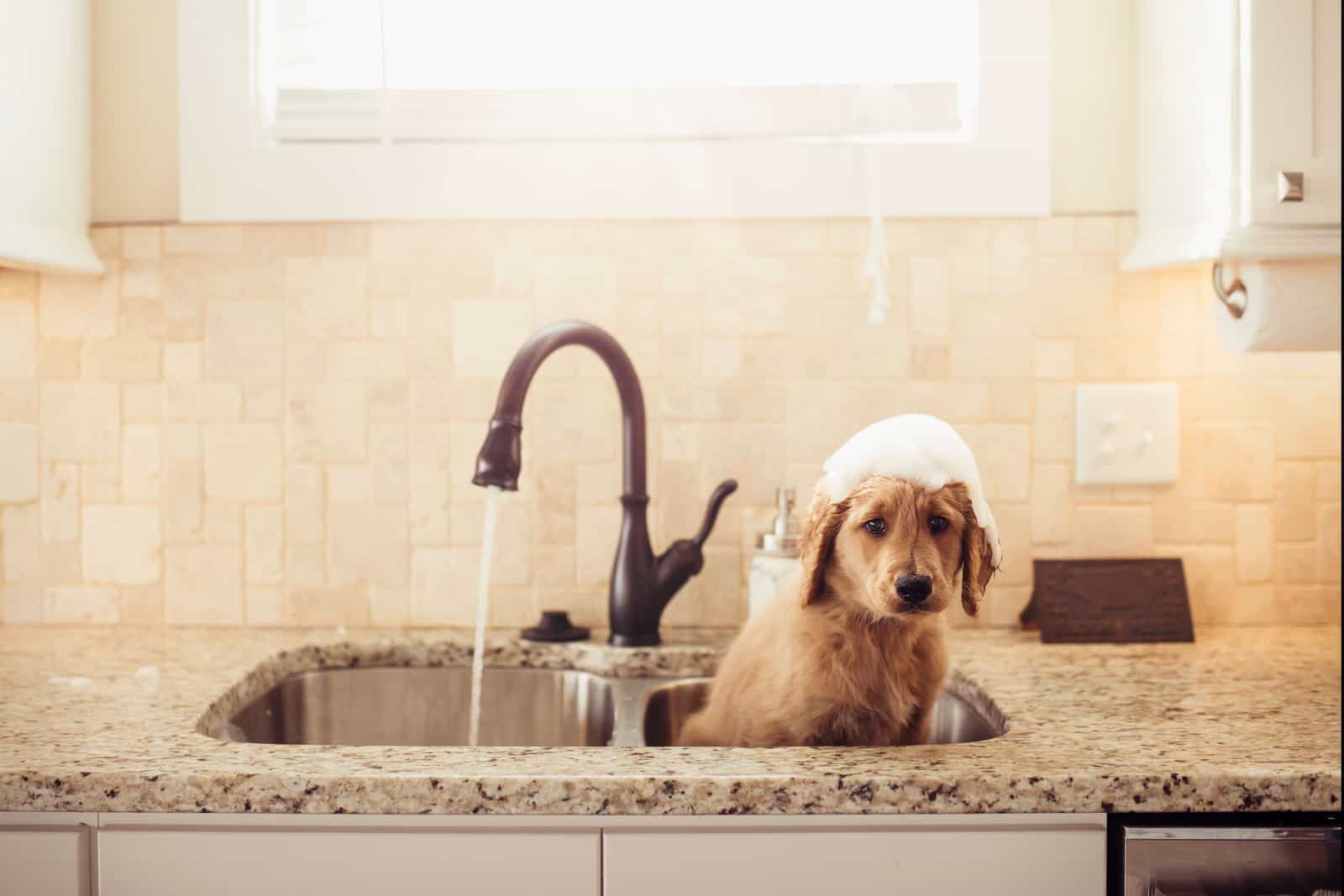
Although bathing isn’t recommended as often as brushing, it’s still an essential part of grooming that shouldn’t be neglected.
One of the main recommendations of dog experts and groomers is to bathe your pup with warm water and a suitable shampoo in order to keep its fur soft and shiny.
Make sure to use a shampoo that is formulated specifically for canines in order to ensure that the coat is washed completely.
Baths improve the circulation of canine blood, which results in better hair growth and healthier skin. However, this can be accomplished only with the usage of the right products.
Using shampoos on a pup that are not formulated specifically for this use will cause significant damage to the canine’s coat. That is one of the main reasons why it is advised that you use a shampoo made specifically for Goldendoodles.
After giving your Goldendoodle a warm bath, it is extremely important to dry the Goldendoodle’s hair as soon as possible, especially if you plan to trim the pup’s hair right after bathing.
The fur should be completely dry before you even try to brush it or else it might become tangled even more.
What Happens If You Don’t Dry The Dog’s Fur After A Bath?
This is a legitimate question that first-time dog owners might ask. The answer is quite simple, actually. Just like you wouldn’t brush your own hair while it’s damp as it might cause frizz and mats… there’s no need to brush your pet’s coat while it’s wet either.
One of the main issues regarding wet hair brushing (unless it’s during the bath) is that it may develop a condition known as “matting,” which is characterized by thick knots and a large number of tangles all over the fur.
This type of brushing can also be quite painful for your pet as the brush won’t be able to slide through the dog’s hair.
Follow the procedures outlined above and continue to practice them on a regular basis. This way, you will be able to ensure the proper maintenance of the Doodle puppy’s fur, especially during the coat-changing process.
Types Of Goldendoodle Coats
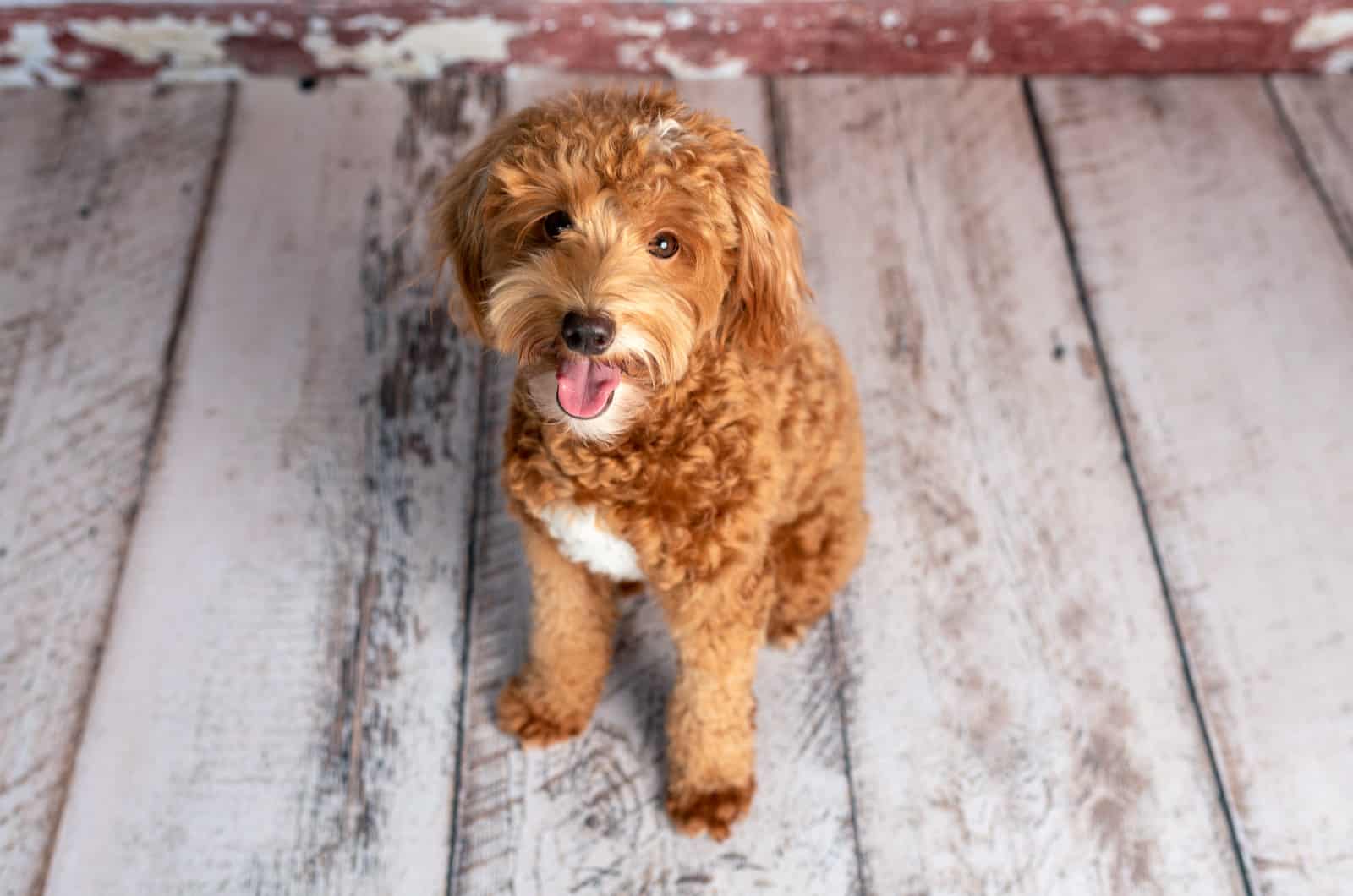
To understand the whole process of the Goldendoodle puppy coat transition, it’s crucial to learn more about the types of Goldendoodle puppy coats in general.
Although it’s difficult to predict what kind of coat a mixed-breed pup will have, there are some general guidelines that you can follow based on the genetic background and the prior experiences of Goldendoodle breeders.
Golden Retrievers have a completely different type of coat than Poodles, so it’s almost impossible to guarantee the type and texture of their offspring’s coat.
However, what we do know is that the Golden Retriever, which makes up one-half of the Goldendoodle crossbreed, possesses a double coat with straight hair that is resistant to water. The second half, Poodle, to be exact, has a single coat that is coarse, curly, and hypoallergenic.
Based on the descriptions of the parent breeds’ coat, it can be said that there are three distinct types of coat that appear most frequently on Goldendoodles.
The Goldendoodle can inherit the traits of both parent breeds, although one side will always be more dominant.
Goldendoodles are almost always hypoallergenic, which is one of their best features if you ask dog lovers who have allergic reactions to canine hair.
One may discover that fifty percent of dogs have a type of coat that is dense and resistant to water, while the other fifty percent might have a curly coat that makes them look like cute Teddy bears.
Can Goldendoodles Have Waves In Their Hair?
As we mentioned, the fur of your Goldendoodle pup can be straight and curly, but sometimes it might appear with a wavy texture as well.
This also depends on the genetic background and the generation of the Doodle pup.
The wavy style of coat is rather prevalent, and may be found on many mixed-breed pups. Actually, this type of coat on the Goldendoodle dog is considered the most preferred type of fur by many experts and breeders.
Wavy Coat
Plenty of dog enthusiasts refer to wavy fur as a fleece coat because of its appearance. This type of coat is usually longer than other types, which makes the waves of their soft puppy fur more visible.
It is considered that wavy fur sheds the least, so if you’re looking for a hypoallergenic breed, you should definitely go with a wavy-haired Goldendoodle.
However, that doesn’t mean these pups don’t require frequent grooming sessions, even though they don’t shed as much as other doggies.
When it comes to this particular sort of coat, a significant amount of brushing will be required in order to avoid tangles and mats in the hair.
In comparison to any other type of fur, the probability of an allergic reaction to a wavy coat is slightly lower. However, you should know that although these pups are considered hypoallergenic, there is still a chance that allergy sufferers will show a reaction… if not to the dog’s hair, then to its saliva or dander.
Curly Coat
A great number of Goldendoodle puppies come with curly fur, which turns them into adorable Teddy-bear-like puppies.
This puppy coat type makes Goldendoodles look more similar to their Poodle parents.
However, that doesn’t mean Doodles automatically inherit Poodle color genes if they inherit their hair texture, so it won’t be a surprise if a curly-haired Goldendoodle appears in the Golden Retriever’s coat shades.
The curly coat is odorless, and it does not aggravate allergy sufferers in any way. Although it might be a bit challenging to brush their fur because of the tight curls, these pups are a blessing as they rarely shed at all (unlike their Golden puppy parents).
Straight Coat
Goldendoodles with straight hair are not a common sight, although they’re not so challenging to breed. However, curly and wavy puppies seem to be more popular, so the demand for straight-haired pups isn’t that high.
Even though their hair structure is more similar to the one of the Golden Retriever, the shape of their head still makes them look more similar to Poodles.
When it comes to grooming, these canines don’t require any special maintenance, but they shed a lot more than their curly/wavy siblings.
Therefore, it essentially comes down to the conclusion that each of these pups comes with a certain set of pros and cons that you simply need to outweigh before you make the final decision to adopt one of them.
Goldendoodle Puppy Coat Transitions Through Phases
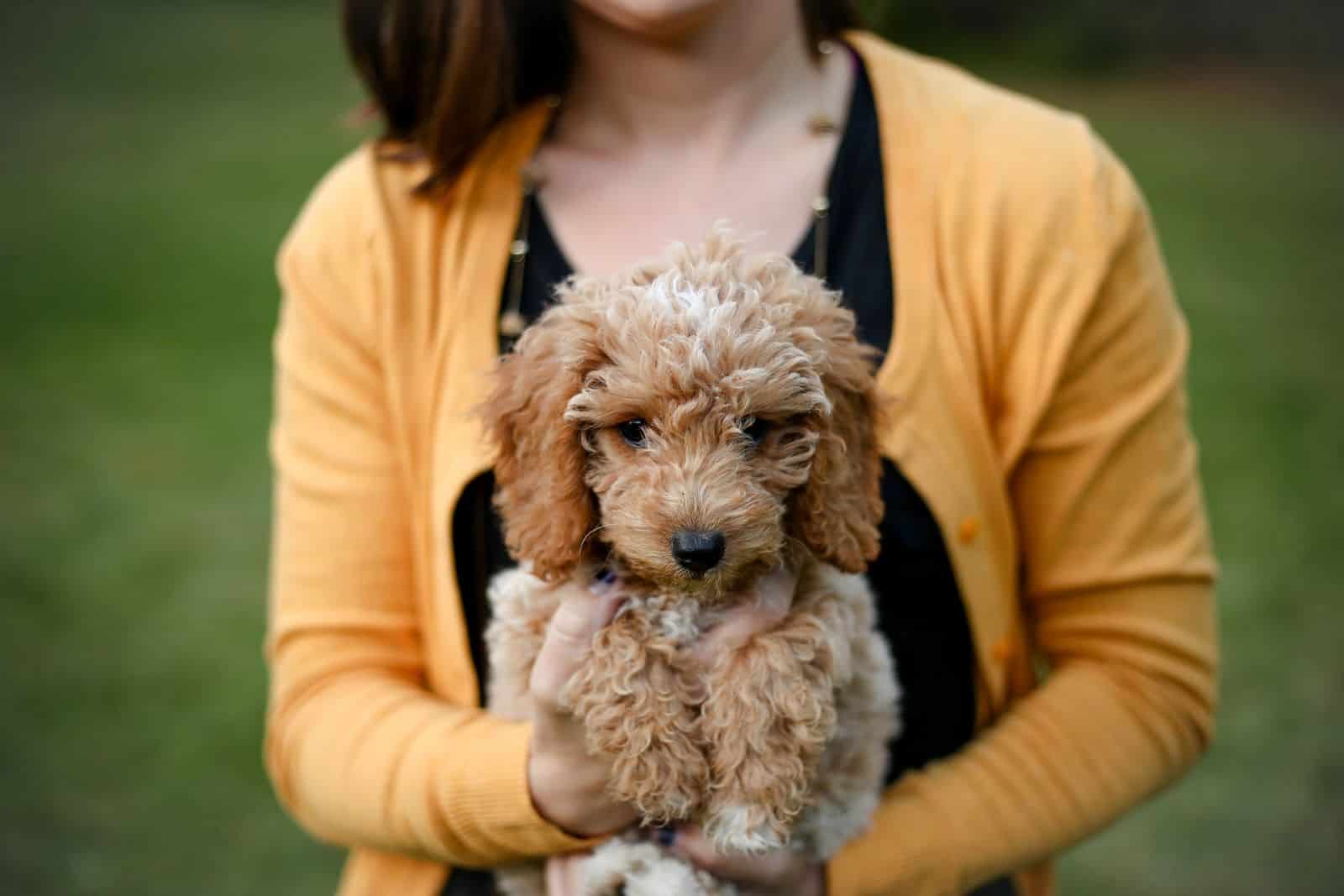
Now that you know that your Goldendoodle puppy’s coat changes as it grows older, it’s time to present the full process of the coat transition.
The Goldendoodle’s puppy coat is usually soft and silky, at least until it turns four or five months of age. During this time, it’s quite easy to maintain its fur as there are no tangles or mats in the hair… if they’re regularly groomed, of course.
After they turn four months of age, it’s time to prepare for the puppy’s coat change, which is also known as “blowing the coat”.
The best way to prepare is to equip yourself with grooming kits that will include at least two types of brushes, a steel comb, rakes, clippers, etc.
More experienced dog owners will already know the procedure of grooming a shedding coat. However, if you’re a first-time owner or simply not experienced enough in grooming long-haired pups, you can take your pup to a professional groomer and ask for advice.
It’s important to start with at-home grooming from early puppyhood, so the pup can get used to it as soon as possible.
Make sure that the atmosphere is positive, and try to keep the grooming session as brief as possible as young pups usually don’t have a lot of patience.
Puppies are very vulnerable during the first few months of their life, which is why they should be handled with great care.
Four Months To 24 Months
It’s impossible to predict the specific time when the coat transition will begin, but generally, it can be anywhere from the fourth to the eighth month of their life.
This period can last for a few months or a few years, depending on the pace of the development. The adult type of coat will start appearing slowly, so you might not notice the change right away.
Brushing and combing should have become a daily practice at this point. If not, make sure to start brushing your pup on a regular basis as soon as possible, or else you will probably have to shave its tangled fur.
RELATED: Shaved Goldendoodle: A Trend To Skip Or Not?
Goldendoodles usually have a double coat, which makes them prone to matting. This easily gets out of control, so if you don’t thoroughly brush your pup’s hair every time, then one little tangle can turn into a matted disaster.
Do Grooming Requirements Change After The Goldendoodle Puppy Coat Transition?
Goldendoodle puppies go through a great number of changes as they grow, including coat changes, which require you to update your grooming tools as well.
There are various types of brushes, combs, and other grooming tools… some of which are suitable for a puppy’s coat, but aren’t strong enough to deal with a rougher adult’s coat.
A new grooming kit is unavoidable if you want to keep your pet’s hair clean, healthy, and shiny at all times.
During the coat transition stage, the texture of the dog’s hair isn’t the only change that is about to occur.
There is also a high possibility that the facial hair, especially around the muzzle, will change color and become lighter, so don’t be surprised if that happens.
As the Goldendoodle gets older, its owner will need to adjust some of the grooming procedures to accommodate the changing needs of his pet.
The incorporation of a grooming table equipped with a hydraulic lift might be quite beneficial both for you and your pooch.
When Do Goldendoodle Puppies Shed Puppy Hair?
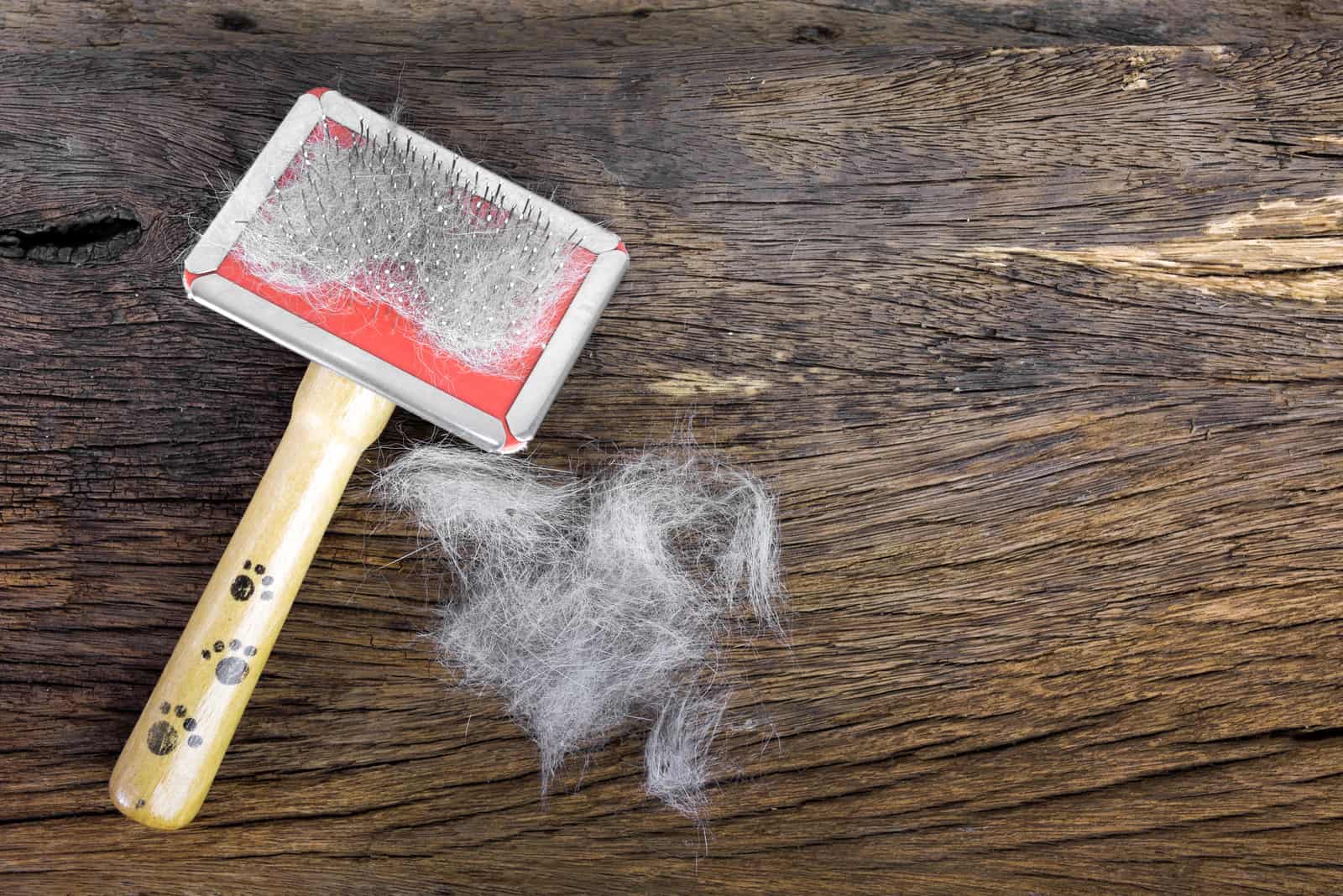
In general, Goldendoodle canines are considered to have a lower tendency to lose hair than other types of dogs.
As we already mentioned, Goldendoodle dogs are supposed to start the shedding process around the fourth or fifth month of their life.
However, this also depends on the individual pup, the pace of its overall development, and its well-being. There’s no need to fear even if your pup doesn’t begin its coat transition after it turns five months of age.
It is essential for the owner of a Goldendoodle to be aware of the fact that some puppies don’t even lose hair for up to ten months.
It’s possible that certain Goldendoodle dogs have a tendency to shed their fur a little later than others, but this is nothing to be concerned about. There is a possibility that some will shed their coat after one year of age.
In order to get ahead of the inevitable shedding of the Goldendoodle puppy’s fur, the owner may wish to start grooming the puppy’s coat as early as three or four months of age.
At this stage, the owner is strongly advised to give the puppy a bath with dog shampoo, and to pay close attention to the puppy’s grooming needs.
What Kind Of Coat Will My Goldendoodle Puppy Have?
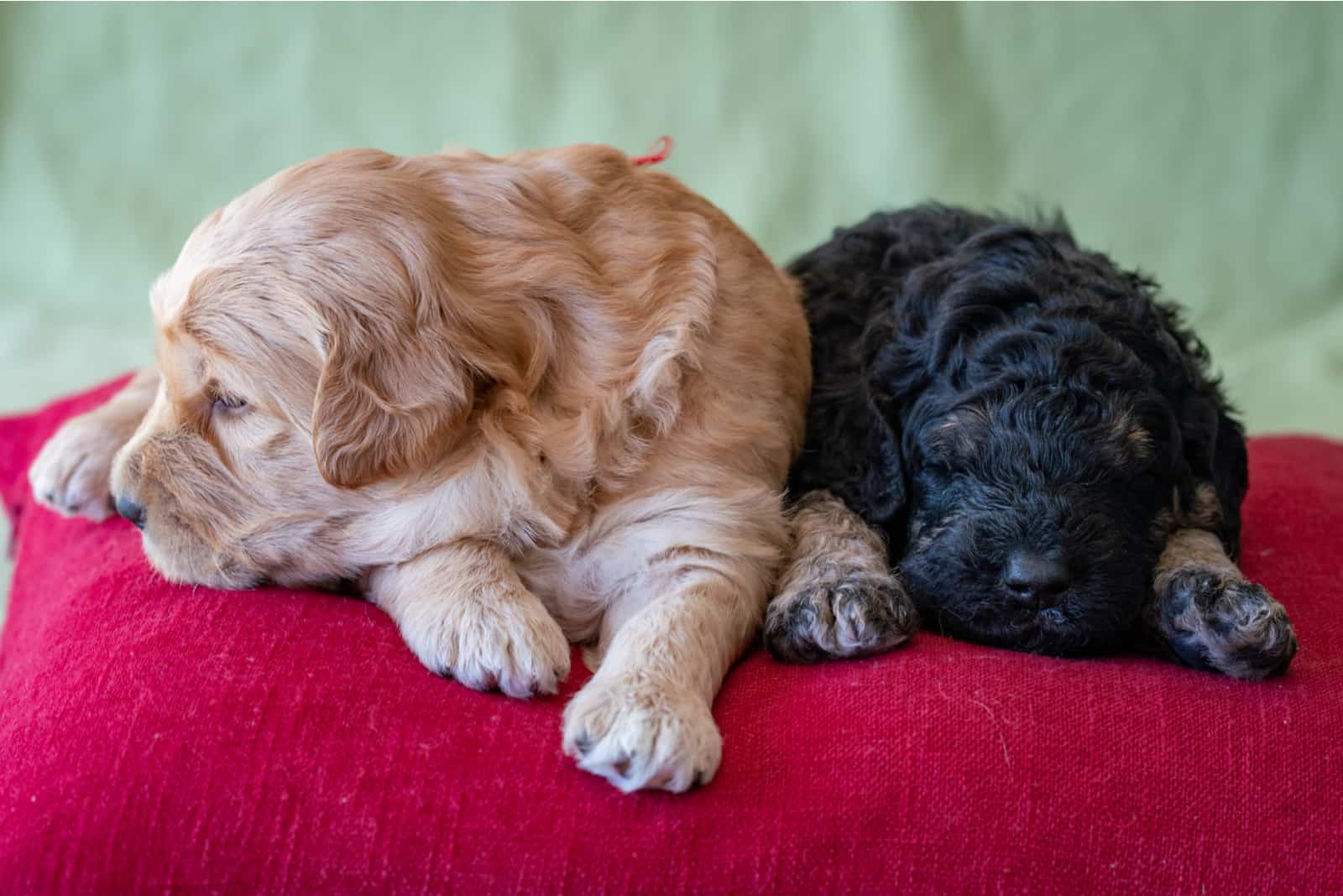
If you are an owner of a Goldendoodle puppy, you will notice that your puppy has very soft and fluffy fur that feels like silk. However, as their coat turns into an adult one’s, the hair becomes significantly dense and stiff.
It can be very challenging to predict what kind of adult coat your Goldendoodle puppy will have, but there are several signals and features that you might be able to look out for. Keep your fingers crossed that the coat will come out the way you want it to.
One thing to keep in mind about Goldendoodle pups is that as they become older, they have a tendency to resemble one another more and more.
The genetics of an individual’s Goldendoodle puppy is the primary factor that will be responsible for determining the sort of coat that the dog will have when it reaches adulthood.
The majority of the time, as Goldendoodle pups mature, they will experience a shift in coat shades from the ones they were born with.
A Golden Retriever and Poodle mix can inherit the color gene from one of the parent breeds. Still, it’s practically impossible for the breeder to manipulate the shade of future puppies.
How Can You Determine The Shade And Texture Of Your Pup?
DNA testing is currently widely used by dog breeders in an effort to determine the type of coat that a specific puppy will have.
Checking the fur that is located around the Goldendoodle puppy’s nose and eyes is a good way to predict the look of your pup.
This might be an excellent indicator of the sort of coat that the puppy will have when it turns into an adult.
If the puppy has a mustache that is particularly pronounced, then it is reasonable to anticipate that the dog will have a coat that is wavy or curly when it matures into an adult.
When you inspect the fur on your pup’s muzzle, if you notice that it has a thick and bushy beard (or a tendency for it), then there is a high chance that your pup will have wavy textured hair as an adult dog.
On the other hand, if the hair around the nose is short and clean, your puppy will probably have straight hair when it reaches full maturity.
Goldendoodle Coat Changes
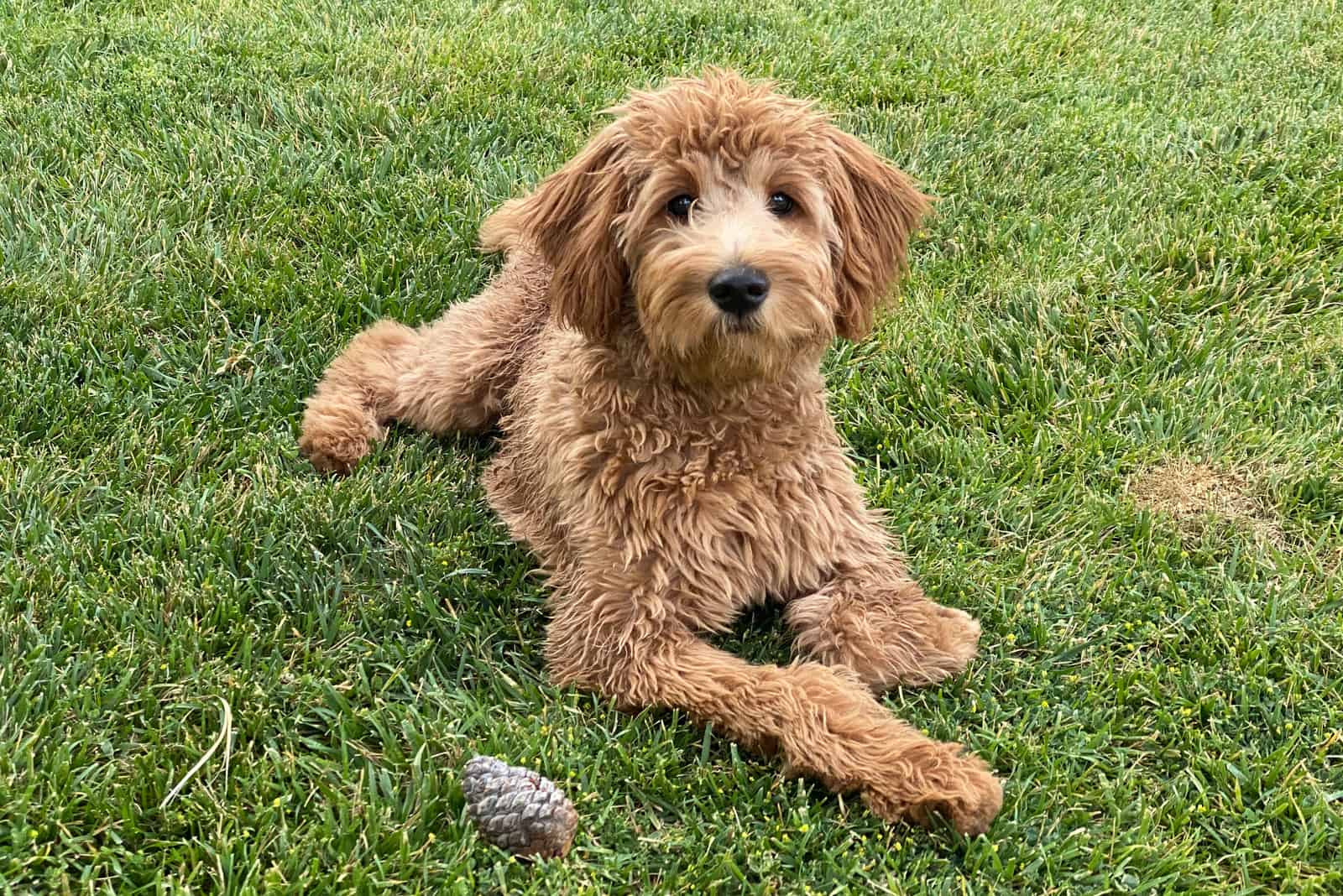
There is no exact transition moment from a puppy to an adult type of coat as this process happens gradually, so the shift between these two types of fur usually becomes visible after it’s completed.
When and how a pooch loses its puppy coat is highly variable from breed to breed.
As soon as you notice that your pet’s hair isn’t as soft as it used to be, it is a clear sign that your doggie isn’t a puppy anymore.
The Goldendoodle puppy coat transition can come either at a slower or a faster pace, but it eventually happens in all canines, including Poodle crosses.
READ NEXT: Smallest Poodle Mixes: You’re Gonna Love All 23 Of Them
Some owners don’t even notice the switch in the canine’s coat, especially if the shape remains the same (curly or wavy).
However, even if you don’t see any particular change in the hair texture, you surely won’t miss all the excess hair on the brush, along with tangles that usually appear around the tail, ears, and armpit areas.
Don’t panic; the symptoms of shedding that your dog is exhibiting during this period are quite normal, and in no way suggest that your dog has inherited fur that sheds excessively.
How To Turn Grooming Into An Enjoyable Experience
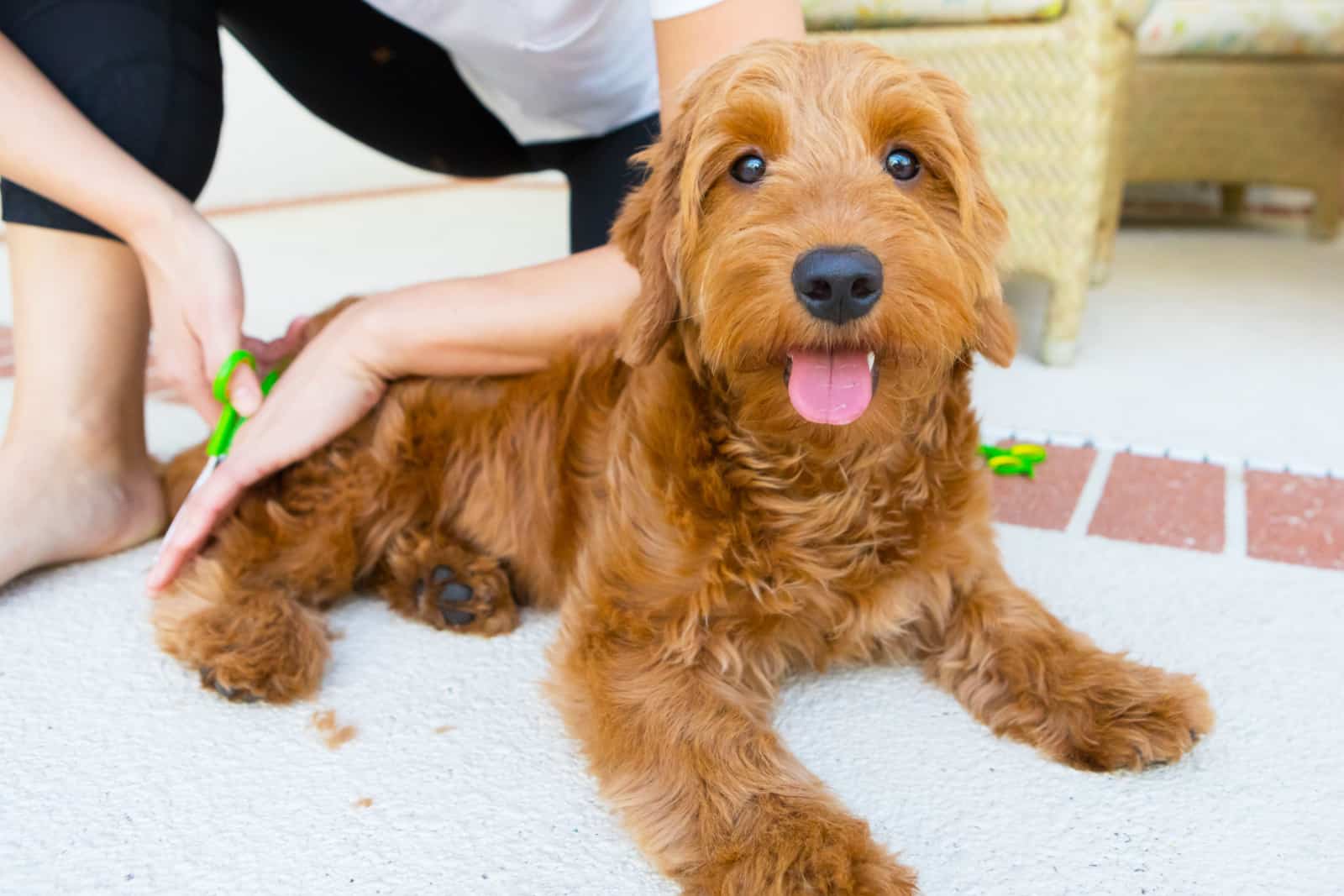
Shedding is not a fun process for owners who’ll have a house filled with excess hair almost every day.
However, one of the advantages of having a Goldendoodle, or a Poodle cross in general, is that you won’t have to deal with shedding for a long time.
Goldendoodles might not be exactly low-maintenance canines because of mats and tangles, but in terms of shedding, they are definitely easy to maintain.
The coat of Poodle mixes will shed only until their adult fur covers their whole body and the coat transition phase ends.
However, this doesn’t mean that your pup’s hair will just easily fall off on the ground as it might become entangled with the adult fur that’s growing. That is why it’s important to brush the puppy’s coat regularly.
If you notice that your pet is showing resistance to grooming, instead of force, you can try some of these grooming tips.
Grooming Tips:
• Arm yourself with patience and a positive attitude before you begin with the brushing process. Take each step at a time… don’t try to brush bigger surfaces until your pup gets used to it. Try to include positive reinforcement from training sessions.
• Don’t forget about the canine’s paws. Start the grooming process with a paw massage that will help your pup relax and create a stronger bond with you. If you do this every time, your pup will gladly let you groom its paws and coat.
• Pay a visit to a professional groomer at least once every few months. However, if you notice that your pup isn’t quite friendly towards other people, make sure that you enroll them in socialization training before you take them anywhere.
• Allow your puppy to investigate the grooming items that you intend to use on it. Place them on the ground so your furry companion can look at them. If you include some of their favorite treats and praises, you’ll have a happy dog prepared for grooming.
• Grooming should begin as early as possible, just like any other type of training, because puppies pick up habits more easily than adult canines.
• It is recommended to groom your Goldendoodle at home, but you should still take your pup to a professional groomer every now and then. Find a trustworthy groomer who takes pleasure in caring for Goldendoodles.
• Give your puppy some time to become used to the environment before diving headfirst into a full-service professional grooming session. A decent starting step would be a short hair trim or light brushing.
Can Puppies Change Fur Color?
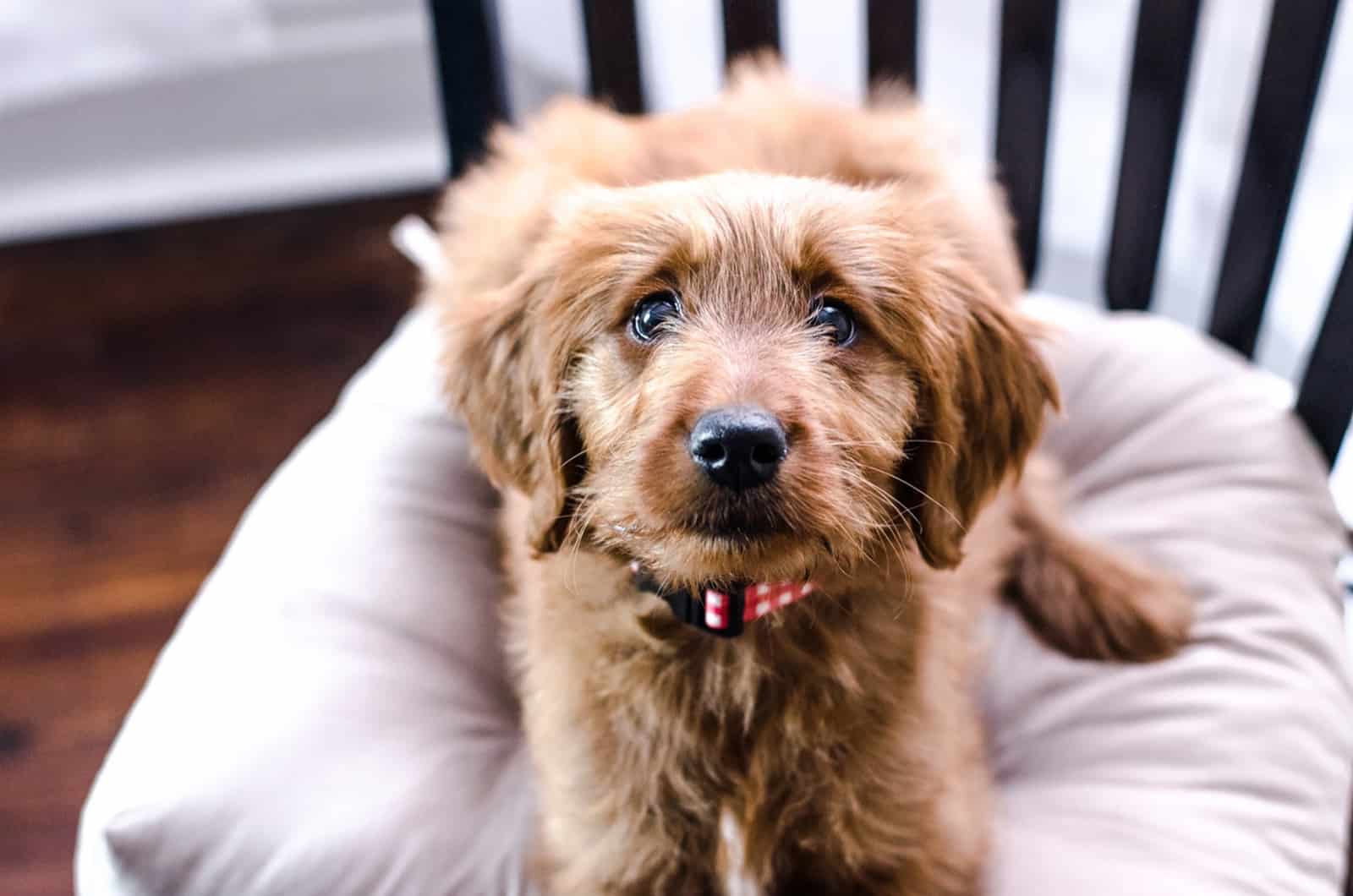
First of all, the answer to this question is definitely, yes. However, this doesn’t mean that your pet will completely change its colors (a brown canine will never turn into a black one, naturally).
It is common for a Golden Retrievers‘ adult coat to get lighter as they mature. This phenomenon is referred to as fading.
RELATED: 5 Golden Retriever Colors: Let’s Spin The Color Wheel
However, the hair around their face and ears rarely changes, so there’s a high chance that your pup won’t have a single coat shade, but rather a combination of lighter and deeper hues of their main color.
Goldendoodles are known to undergo a shift in color pattern after the shedding of their puppy coat, which often coincides with the process. That is why puppy fur is typically darker than the fur found in mature canines.
How Can You Check Whether Your Adult Dog Will Have Furnishing?
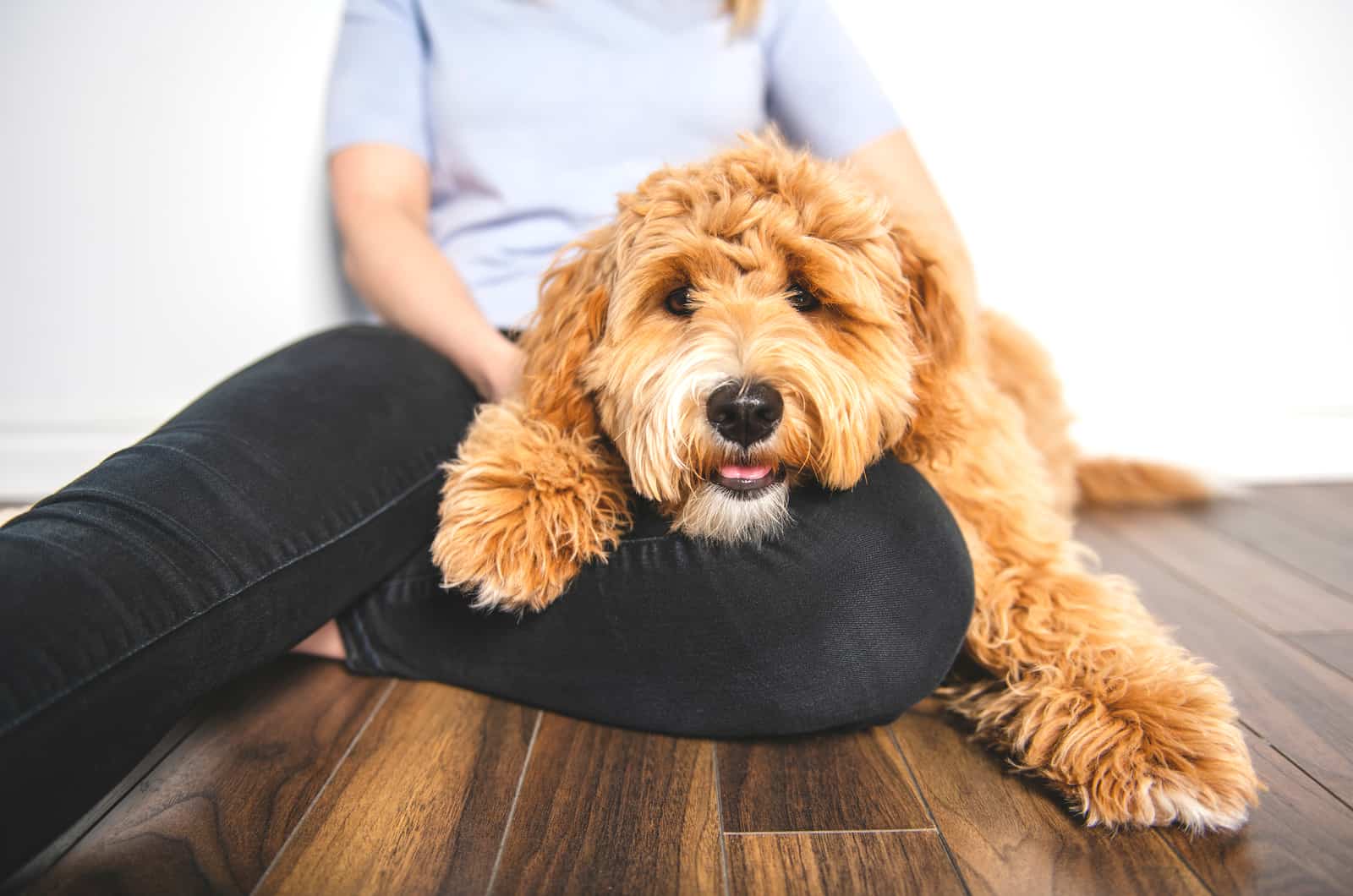
Furnishings usually refer to facial hair (thick eyebrows and beard). The iconic Teddy bear look of Poodle mixes is partly a result of them having denser fur on their face.
If you’re interested in knowing whether your furry buddy will have furnishings when it becomes an adult canine, there are a few ways you can discover it.
Paying attention to the generation of your Poodle’s offspring is the most reliable approach to determining whether or not they will have furnishings.
F1 Goldendoodles usually don’t have any furnishings. The likelihood of having them is highest in F1B Goldendoodles. If a puppy is born without these features, it is quite improbable that it will acquire them as an adult.
Talking to the breeder is a good approach to gaining an accurate prediction of the type of fur your Goldendoodle will have once they have completed the process of blowing their coat.
The analysis of Goldendoodle parents could reveal whether their offspring will have longer facial hair as well. However, this isn’t a reliable method as there’s no guarantee that the pup will inherit this trait from its parents.
Wrapping Up
The Goldendoodle puppy coat transition is not a simple process as you can see, but if you prepare yourself for it in time, it’ll go as smoothly as silk.
English Goldendoodles are prone to these changes just like any other Doodle breed. However, this type of transition is also common among other canine breeds.
But, at the end of the day, one thing is sure – no matter what your Goldendoodle ends up looking like, you’re going to love it the same way.
How could you possibly resist it? As soon as you take a peek at it, your heart will immediately melt!
READ NEXT:
The F2B Goldendoodle: Getting To Know This Teddy Dog
